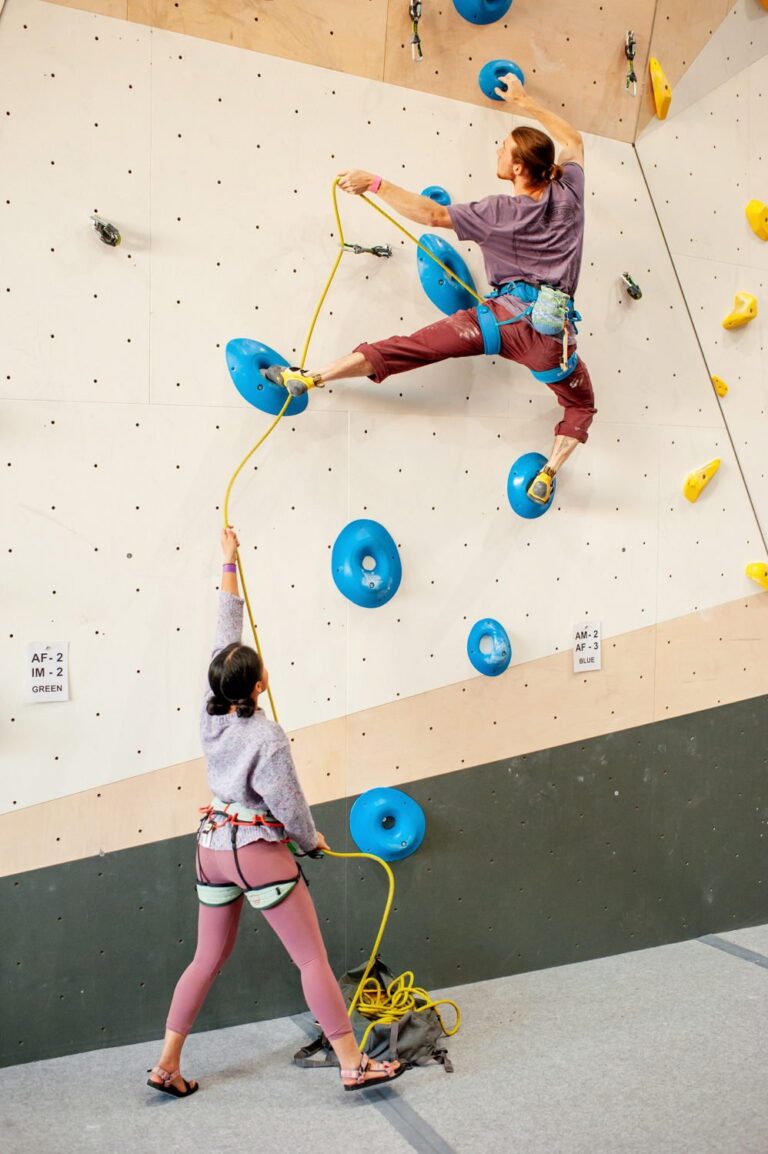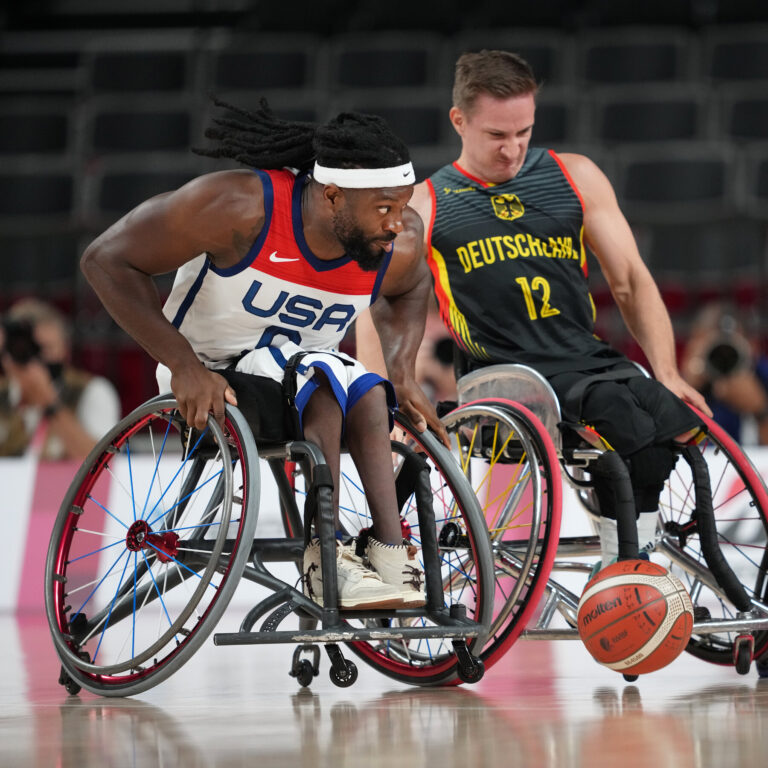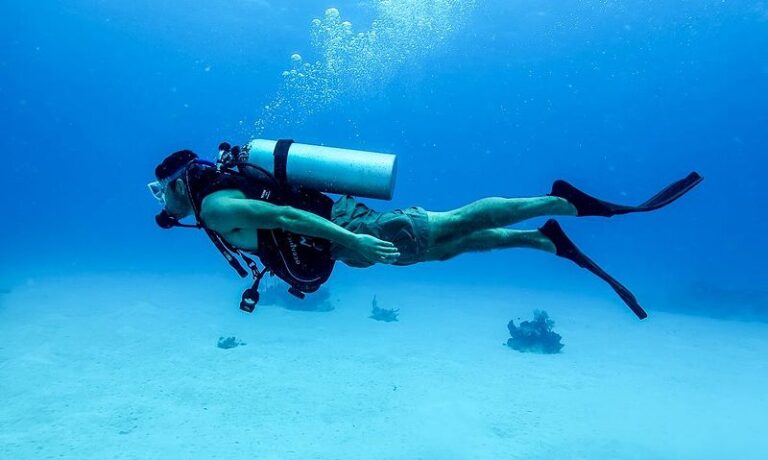The best sports to coach depend on personal interest and expertise, but some popular options include football, basketball, soccer, and baseball. Coaching sports allows individuals to share their knowledge and passion while guiding athletes towards achieving their full potential.
It also involves developing strategies, teaching skills, building teamwork, and fostering a supportive environment to enable athletes to succeed. As a coach, you play a vital role in motivating and inspiring players, instilling discipline, and promoting personal growth both on and off the field.
Whether you choose to coach a team or provide individual training, the satisfaction of witnessing athletes grow, improve, and achieve their goals is incomparable.
1. Baseball
When it comes to coaching sports, baseball proves to be an exciting and popular choice. The sport combines skill, strategy, and teamwork, making it an ideal sport to coach for both experienced players and beginners alike. A successful baseball coach is responsible for developing players’ pitching techniques, honing their hitting strategies, and improving their fielding skills through various drills.
1.1 Pitching Techniques
Developing effective pitching techniques is crucial for any baseball player. As a coach, it is essential to teach the fundamentals of pitching, including proper grip, stance, and follow-through. Additionally, emphasizing the importance of accuracy, velocity, and control will help pitchers enhance their overall performance.
Here are a few key pitching techniques that coaches can focus on:
- Mastering different pitch types, including fastball, curveball, change-up, and slider.
- Improving command by consistently hitting specific targets within the strike zone.
- Understanding the importance of rhythm, timing, and release point to generate maximum power.
1.2 Hitting Strategies
Coaching effective hitting strategies can significantly impact the performance of a baseball team. As a coach, it is important to teach players the proper mechanics and techniques to improve their batting average and power. By focusing on the following strategies, coaches can help players excel in hitting:
- Developing a strong and balanced stance that allows for optimal weight transfer and bat speed.
- Teaching proper hand placement, grip, and swinging mechanics for consistent contact and power.
- Emphasizing pitch recognition and the ability to adjust to different types of pitches.
1.3 Fielding Drills
Fielding drills play a crucial role in strengthening a player’s defensive skills and overall game performance. As a coach, incorporating various fielding drills into practice sessions can help players develop agility, reflexes, and teamwork. Here are some effective fielding drills to consider:
| Drill Name | Description |
|---|---|
| Ground Ball Reaction Drill | Players practice fielding ground balls at different angles and speeds to improve reaction time and fielding technique. |
| Catch-and-Throw Drill | Players work on catching fly balls and quickly transitioning into throwing positions to reinforce proper mechanics and throwing accuracy. |
| Cut-off Drill | Players simulate game situations where they practice positioning themselves as cut-off players, improving communication and decision-making skills. |
By incorporating these pitching techniques, hitting strategies, and fielding drills, baseball coaches can guide their players towards becoming well-rounded and successful athletes. The combination of skill development, strategic thinking, and teamwork in baseball makes it a truly engaging and rewarding sport to coach.

Credit: www.amazon.com
2. Soccer
Soccer, also known as football in many parts of the world, is one of the most popular sports globally. It is a team sport that requires strategy, skill, and coordination. Soccer is not only enjoyable to play, but it also offers numerous benefits to those coaching the sport. As a coach, you have the opportunity to shape young athletes into strong, intelligent players who can excel both on and off the field. Here are some key areas to focus on when coaching soccer:
2.1 Offensive Tactics
Soccer is a game of strategy, and as a coach, it is important to provide your players with a strong offensive foundation. By implementing effective offensive tactics, you can help your team create scoring opportunities and dominate the game. Here are a few offensive tactics to consider:
- Positional Play: Teach your players how to position themselves on the field strategically. Emphasize the importance of maintaining spacing and creating passing lanes.
- Attacking Formations: Experiment with different attacking formations such as the 4-3-3 or the 4-4-2 to find the setup that best suits your team’s strengths.
- Quick Transitions: Encourage your players to transition quickly from defense to offense. Teach them the importance of counter-attacks and fast breaks to catch the opposing team off guard.
2.2 Defensive Strategies
Defensive strategies are essential for any successful soccer team. As a coach, it is your responsibility to teach your players how to defend effectively and prevent the opposition from scoring. Here are a few defensive strategies you can incorporate into your coaching:
- Pressing: Teach your team the importance of pressing and putting pressure on the opponent when they have the ball. Emphasize the need for coordination and timing to disrupt the opponent’s passing and shooting opportunities.
- Zone Defense: Implement a zone defense system where players are responsible for specific areas of the field. This can help create a solid defensive structure and limit the opponent’s chances.
- Man-Marking: Assign players to mark specific opponents, especially key players on the opposing team. This strategy can disrupt the opponent’s flow of play and minimize their effectiveness.
2.3 Conditioning Exercises
Conditioning plays a crucial role in soccer, as it requires players to have stamina, agility, and endurance. As a coach, incorporating conditioning exercises into your training sessions is vital to ensure that your players can perform at their best for the entire game. Here are some conditioning exercises you can incorporate:
- Sprints: Include short sprints to improve players’ speed and explosiveness on the field.
- Aerobic Workouts: Integrate aerobic exercises such as jogging or distance running to enhance players’ endurance.
- Agility Drills: Implement agility drills, such as ladder drills or cone drills, to improve players’ quickness and change of direction.
3. Basketball
Basketball is a fast-paced and highly competitive sport that requires strong teamwork and strategic thinking. As a coach, it is important to understand the key aspects of the game in order to effectively guide your team to success. In this section, we will explore three crucial areas of basketball coaching: offensive plays, defensive techniques, and team building activities.
3.1 Offensive Plays
When it comes to offensive plays in basketball, it is crucial to have a well-structured game plan that maximizes scoring opportunities and keeps the defense on their toes. By incorporating a variety of plays and strategies, you can create confusion among the opposing team and increase your chances of success.
Here are some offensive plays to consider:
- Pick and roll: This play involves one player setting a screen for the ball handler to create space and opportunities for scoring.
- Fast break: An effective way to catch the defense off guard is by quickly transitioning from defense to offense, capitalizing on the opponent’s lack of readiness.
- Isolation: This play involves clearing out space for a particular player to exploit one-on-one matchups and create scoring opportunities.
- Motion offense: A fluid and versatile offensive strategy that focuses on constant player movement and ball rotation to create open shots.
3.2 Defensive Techniques
A strong defense is essential for winning basketball games. As a coach, it is important to teach your players effective defensive techniques that can disrupt the opponent’s offense and minimize their scoring opportunities. By emphasizing the fundamentals and implementing the right strategies, you can turn your team into a defensive powerhouse.
Here are some defensive techniques to focus on:
- Man-to-man defense: Each player is assigned to guard a specific opponent, applying pressure and denying easy shots or passes.
- Zone defense: Players are divided into different zones on the court, covering specific areas and preventing penetration and open shots.
- Press defense: Applying full-court pressure can force turnovers and result in easy scoring opportunities.
- Help defense: Players provide support and help teammates in defending against drives or pick and roll situations.
3.3 Team Building Activities
A cohesive and united team is more likely to achieve success on the basketball court. Building strong relationships and fostering camaraderie among your players are crucial aspects of coaching. By organizing team building activities, you can create a positive team culture and improve overall team chemistry.
Here are some team building activities to consider:
| 1. | Team-building retreats: Take your team on a weekend getaway where they can bond and participate in various team-building exercises. |
| 2. | Scrimmages and friendly games: Encourage friendly competition among teammates by arranging scrimmages or organizing games against other teams. |
Remember that team building activities should be fun and engaging, allowing players to develop trust and foster a sense of community.

Credit: coachtube.com
4. Swimming
Swimming is one of the best sports to coach, as it provides a full-body workout and promotes cardiovascular health. With its low-impact nature, swimming is suitable for individuals of all ages and fitness levels, making it an accessible and rewarding sport to teach.
Swimming is a popular sport to coach, offering a wide range of benefits for both athletes and coaches. Whether you’re working with beginners learning the basics or advanced swimmers refining their techniques, there is no shortage of opportunities to make a positive impact on your athletes’ performance. In this section, we will explore three key areas of swimming coaching that will help you develop well-rounded and successful swimmers.4.1 Stroke Refinement
One of the primary goals of swimming coaching is to help athletes refine their strokes and swim efficiently in the water. Focusing on stroke refinement involves analyzing each swimmer’s technique and providing guidance and feedback for improvement. By breaking down the four main swimming strokes – freestyle, backstroke, breaststroke, and butterfly – coaches can identify areas that require attention and implement specific drills to address these issues. These drills, combined with regular practice and repetition, help swimmers develop muscle memory and master the correct stroke techniques. With consistent stroke refinement, athletes can increase their speed and efficiency, giving them a competitive edge in races.4.2 Start And Turn Techniques
Starts and turns are crucial aspects of competitive swimming as they can make a significant difference in race outcomes. As a swimming coach, it is essential to focus on teaching athletes the proper techniques for starts and turns to maximize their performance. Start techniques include the correct body position, explosion off the blocks, and underwater streamline. Coaches can also emphasize the importance of turn techniques, such as executing fast and efficient turns with streamlined underwater movements. Implementing start and turn drills in training sessions allows swimmers to fine-tune their skills and gain an advantage over their competitors. By mastering these techniques, athletes can shave off valuable seconds from their race times.4.3 Endurance Training
Endurance training plays a vital role in swimming, as it directly impacts a swimmer’s ability to sustain their performance throughout long-distance events. As a coach, incorporating endurance training into your swimming program is crucial to developing the stamina and cardiovascular fitness of your athletes. This can be achieved through interval training, which involves alternating periods of high-intensity swimming with periods of rest or lower intensity. By gradually increasing the duration and intensity of the intervals over time, swimmers can build up their endurance capacity. It’s important to note that endurance training should be tailored to each swimmer’s abilities and gradually increased to prevent overexertion and injury. With consistent and progressive endurance training, athletes can overcome fatigue, maintain optimal performance, and achieve their goals in both training sessions and competitions. In conclusion, swimming offers an excellent opportunity for coaches to make a positive impact on their athletes’ performance. By focusing on stroke refinement, start and turn techniques, and endurance training, coaches can help swimmers become more skilled, efficient, and competitive in the water. Remember, each swimmer has unique strengths and weaknesses, so tailoring your coaching techniques and training programs to individual needs and goals is essential for long-term success in the sport.5. Track And Field
Track and Field is an exceptional sport to coach, offering a wide array of disciplines that test an athlete’s speed, endurance, strength, and agility. With events ranging from sprints to long-distance races, jumping to throwing, and hurdles to relays, Track and Field provides a unique platform for athletes to showcase their abilities. In this section, we will explore three essential aspects of coaching Track and Field: sprinting techniques, jumping fundamentals, and throwing skills.
5.1 Sprinting Techniques
Effective sprinting techniques are crucial for athletes to attain maximum speed and optimize their performance on the track. Coaches play a significant role in helping their athletes develop proper sprinting form and mechanics, which includes:
- Maintaining an upright posture throughout the run.
- Driving the knees forward and generating power from the hips.
- Ensuring quick and powerful arm movements.
- Optimizing stride length and frequency.
- Implementing proper breathing techniques.
By focusing on these technical aspects and providing consistent feedback, coaches can help athletes enhance their sprinting abilities, leading to faster times and improved race results.
5.2 Jumping Fundamentals
Jumping events, such as long jump and high jump, emphasize explosive power, coordination, and precision. As a coach, it is essential to teach athletes the fundamental skills required for successful jumping:
- Developing explosive leg power through plyometric exercises.
- Practicing proper take-off techniques, including the angle of approach and timing.
- Focusing on optimal body positioning during the different phases of the jump.
- Understanding the importance of arm movements and their contribution to generating upwards momentum.
- Mastering landing techniques to minimize impact and maximize distance or height achieved.
With consistent training and attention to these fundamentals, athletes can improve their jumping abilities and aim for new personal bests in their respective events.
5.3 Throwing Skills
Throwing events, such as shot put, discus throw, and javelin throw, require athletes to harness their strength, technique, and coordination. As a coach, it is crucial to focus on developing solid throwing skills:
- Mastering the proper grip and release technique for each throwing implement.
- Establishing a strong and stable base through proper stance and footwork.
- Emphasizing the generation of power from the legs and transferring it through the core and upper body.
- Teaching athletes to maintain balance and stability while executing the throwing motion.
- Providing guidance on the angle and trajectory for optimal distance or height.
By honing these essential throwing skills, athletes can enhance their performances and achieve greater distances or heights in their respective events.

Credit: fs.blog
Frequently Asked Questions For Best Sports To Coach
What Is The Easiest Sport To Coach?
The easiest sport to coach varies depending on personal experience and knowledge, but sports like swimming, tennis, and track and field often have straightforward rules and techniques. Keep in mind that coaching ease can also depend on individual factors like natural talent, teamwork, and dedication.
What Sport Is Coaching Most Important?
Coaching is most important in team sports as it improves players’ skills, strategy, and teamwork.
What Are The Hardest Sports To Coach?
Coaching the hardest sports requires expert skills, patience, and adaptability. Sports like gymnastics, swimming, and figure skating can be demanding due to the precision and technique involved. Endurance sports like marathon running and triathlon also pose significant challenges. Effective coaching strategies are crucial to navigate these complex sports successfully.
What Is Best Practice In Sports Coaching?
Best practice in sports coaching involves effective communication, skill development, and individualized training plans. Coaches must create a positive and motivating environment, provide constructive feedback, and prioritize player safety. Using proper coaching techniques and fostering teamwork are crucial for a successful coaching experience.
What Makes a Sport Great for Both Coaching and Refereeing?
A sport becomes great for coaching and refereeing when it promotes fairness, strategy, and skill development. The best sports referee ensures the game runs smoothly with unbiased decisions, allowing coaches to focus on improving their team’s performance and fostering player growth in a competitive yet respectful environment.
Conclusion
To sum up, coaching sports is a fulfilling and rewarding experience that allows you to make a lasting impact on young athletes. Whether you choose to coach soccer, basketball, baseball, volleyball, or any other sport, you have the opportunity to instill valuable life skills such as teamwork, discipline, and perseverance.
By creating a positive environment and nurturing a love for the game, you can help athletes develop both on and off the field. So, choose a sport that aligns with your passion and expertise, and embark on a coaching journey that will leave a lasting legacy.




